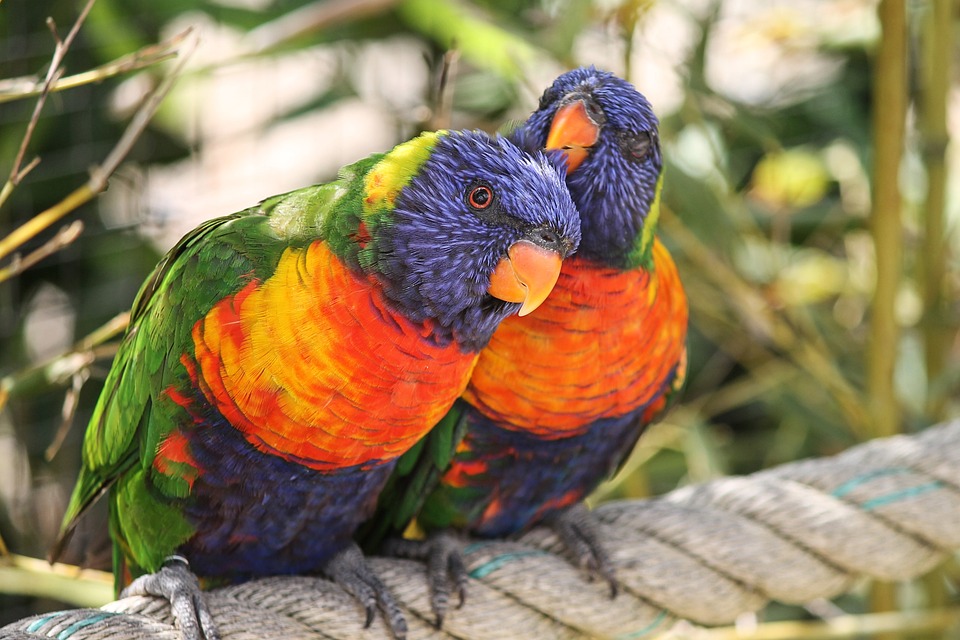Parrots are highly intelligent creatures that require mental stimulation to keep them engaged and content. Offering various mental challenges and activities can enrich their environment and help prevent boredom and potential behavior problems. One effective way to provide mental challenges for your parrot is through teaching them to recognize colors and shapes. This article will guide you through the process of teaching your parrot about colors and shapes, explain the benefits of these activities, and address frequently asked questions.
Teaching Your Parrot to Recognize Colors and Shapes
1. Start with Basic Concepts: Begin by introducing your parrot to simple colors and shapes. Use brightly colored toys or objects with distinct shapes to make it easier for your parrot to differentiate between them.
2. Use Positive Reinforcement: Reward your parrot with treats, praise, or favorite toys when they show interest or correctly identify colors and shapes. Positive reinforcement encourages learning and motivates your parrot to participate in these mental challenges.
3. Repetition and Consistency: Consistently expose your parrot to colors and shapes during training sessions. Repeat the names of colors and shapes while pointing at them to reinforce their association.
4. Gradual Progression: As your parrot becomes more proficient in identifying basic colors and shapes, gradually introduce more complex variations. This helps to continuously challenge their cognitive abilities and prevent boredom.
Benefits of Teaching Parrots about Colors and Shapes
1. Mental Stimulation: Learning colors and shapes engages your parrot’s brain, providing important mental stimulation. This stimulation is vital for their overall well-being and can help prevent behavioral issues associated with boredom and frustration.
2. Bonding and Communication: Teaching your parrot about colors and shapes strengthens the bond between you and your feathered friend. It also enhances communication as you both learn to understand each other through these shared activities.
3. Environmental Enrichment: Incorporating learning activities into your parrot’s routine enriches their environment. It keeps them mentally active and prevents them from resorting to destructive behaviors out of boredom.
4. Increased Problem-Solving Skills: By engaging in activities that involve recognizing colors and shapes, your parrot develops problem-solving skills. This helps them think critically and adapt to different situations, promoting mental flexibility.
FAQs (Frequently Asked Questions)
Q1. Can all parrot species learn colors and shapes?
A1. Yes, most parrot species have the ability to learn colors and shapes. Some species may grasp these concepts more quickly than others, but with patience and consistency, any parrot can participate in these mental challenges.
Q2. How long does it take to teach a parrot to recognize colors and shapes?
A2. The time required for a parrot to learn colors and shapes varies from individual to individual. It depends on their learning capabilities, previous training experiences, and the amount of time dedicated to training sessions. It is important to be patient and not rush the process.
Q3. What if my parrot doesn’t seem interested in learning colors and shapes?
A3. If your parrot initially shows disinterest, try making the learning sessions more interactive and enticing. Use their favorite treats, toys, or incorporate games to make the activity more appealing. Gradually increase their exposure to colors and shapes, and they may become more engaged over time.
Q4. Are there any potential risks or downsides to these mental challenges?
A4. When conducted properly, teaching your parrot colors and shapes poses no risks. However, it is crucial to ensure that the objects used are safe for your parrot to interact with, without presenting any choking hazards or toxic materials.
Remember, providing mental challenges through teaching colors and shapes is just one aspect of enriching your parrot’s life. It is important to combine these activities with a balanced diet, physical exercise, and social interaction to maintain their overall well-being. With patience, consistency, and a positive approach, you can create a mentally stimulating environment for your parrot, ensuring a happy and fulfilled companion.









